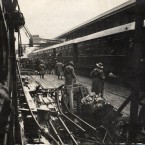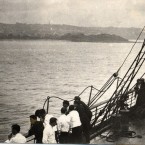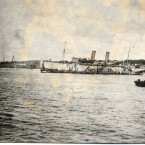Holsworthy camp remained open until the last internees and prisoners of war were Holsworthy camp remained open until the last internees were deported to Germany in 1920. The total number of people deported was 6,150. Of these, 5,414 people had been interned, the rest were family members or those ordered by the Defence Department to leave the country. Over one thousand people appealed to the Commonwealth Alien Board against deportation. Only 306 were successful. They included 179 naturalised or native born Australians. The 306 were the only people allowed to stay from the 5,600 internees still at Holsworthy at the end of the war.
In considering these appeals the Board disregarded all ties these people had to Australia. A mass protest letter by deportees that pleaded for clemency “in the name of our wives, our children, our brides” fell on deaf ears. One legal challenge was launched by Fredrick Meyer, who was naturalised and married in Australia with a child and had run for state parliament before the war. In May 1920 he was told that his naturalisation had been revoked and that the Minister for Defence had ordered his deportation. He appealed against this as an improper use of power but the High Court found that both deportation and de-naturalisation were entirely at the discretion of the Minister and Governor-General respectively and Meyer was deported the next day.
During and after the war nearly all traces of the Australian- German community were erased from the cultural landscape in a ruthless ethnic purge. Many families anglicised their names. At Temora there is evidence of at least one local ‘German’ family changing their name by deed poll. Many other families clandestinely changed the spelling of their names.
What remains are places and material culture with their heritage suppressed or forgotten. Many families are aware of a German presence in their history, but the stigma of World War One and Two has erased almost all traces of it from many families’ collective memory.




